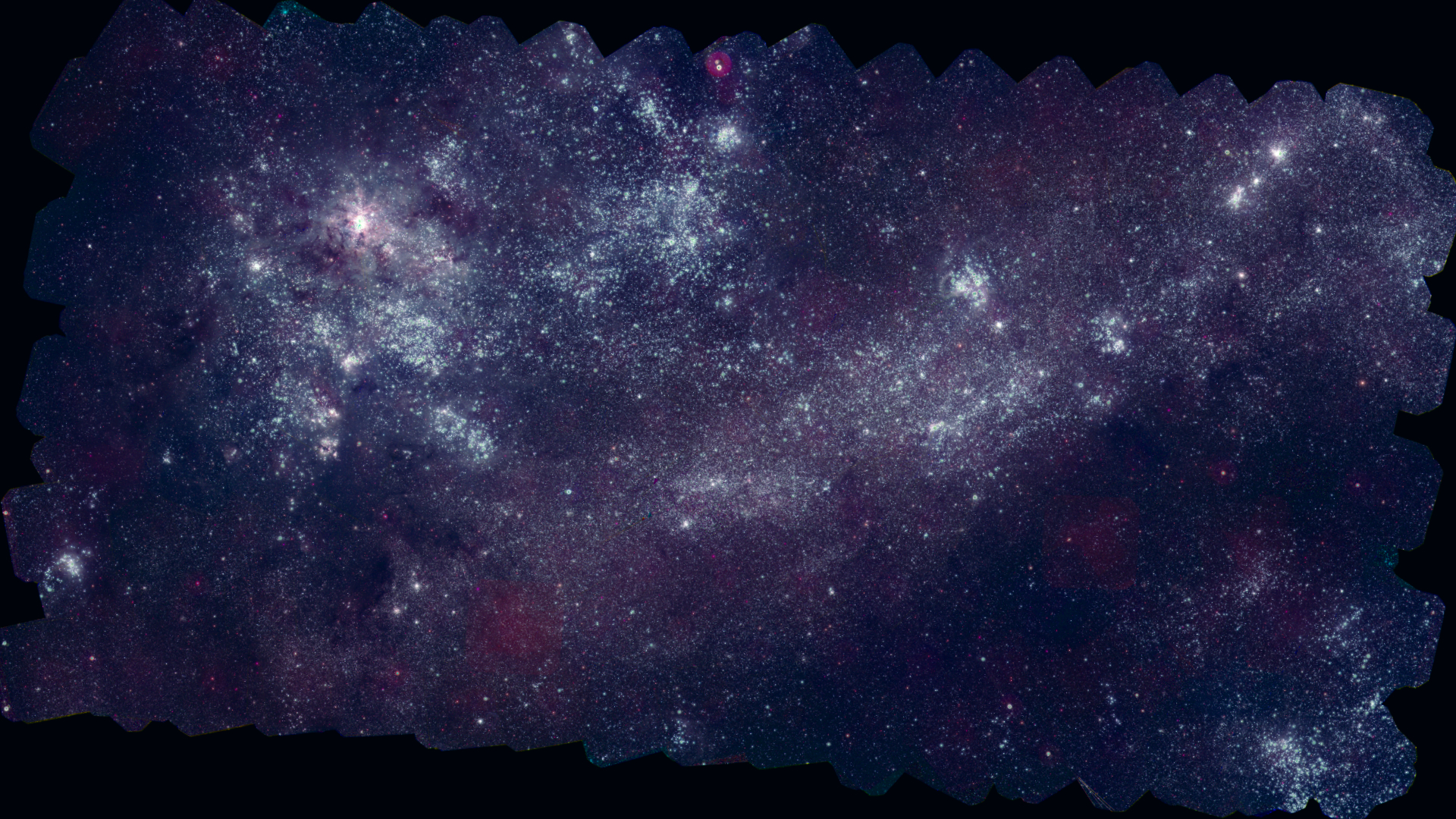Portrait In Ultraviolet
About 200,000 light-years away, two small and misshapen galaxies orbit our own. Known as the Large and Small Magellenic Clouds, or LMC and SMC for short, they are the Milky Way’s closest neighbors, visible from Earth’s Southern Hemisphere as faint, glowing clouds in the night sky. Now, we can explore the breadth of these galaxies with the best ultraviolet view ever created. Astronomers wanted to view the LMC and SMC in ultraviolet because that light removes the distraction of normal stars like our sun, revealing only the hottest stars and star-formation regions. To create the mosaics, scientists stitched together thousands of individual snapshots taken by the Ultraviolet/Optical Telescope on NASA’s Swift satellite. Such detail allows us to study the evolution of each galaxy’s young stars in a single picture—an option that’s not available for own galaxy, which we must view from the inside. Watch the video to learn more.

Astronomers assemble broad and intricate UV pictures of two nearby galaxies.
This video, narrated by NASA researcher Dr. Stefan Immler, highlights some of the most interesting sights in both galaxies.

The LMC contains the Tarantula Nebula, the most active star formation region of all the local galaxies.

The LMC is only one-tenth the size of our Milky Way, with only 1 percent of its mass. The SMC is even smaller.

This visible light mosaic shows the LMC and SMC in context with the plane of our own galaxy, the Milky Way.
For More Information
See NASA.gov
Credits
Please give credit for this item to:
NASA's Goddard Space Flight Center
UV light images courtesy of NASA/GSFC/Swift/S. Immler and M. Siegel, Penn State
Visible light images courtesy of Axel Mellinger, Central Michigan University
-
Animator
- Scott Wiessinger (USRA)
-
Video editor
- Scott Wiessinger (USRA)
-
Narration
- Francis Reddy (Syneren Technologies)
-
Narrator
- Stefan Immler (UMCP)
-
Producer
- Scott Wiessinger (USRA)
-
Scientist
- Stefan Immler (UMCP)
-
Writers
- Aviva H. Rutkin (USRA)
- Francis Reddy (Syneren Technologies)
Release date
This page was originally published on Tuesday, June 25, 2013.
This page was last updated on Wednesday, May 3, 2023 at 1:52 PM EDT.
